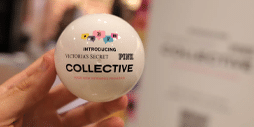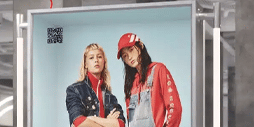As lockdown eases the health and beauty industry needs radical touchless technology to pacify safety conscious shoppers. One of the forerunners to make this change a reality is facial recognition software. Whilst this technology has huge safe shopping applications, it also has the ability to accelerate a movement steadily gaining momentum prior to 2020: the expansion of inclusive beauty.
The beauty industry only started making proper moves to be more inclusive in 2017 with Fenty beauty’s “inclusive beauty” campaign, but since then the industry has come a long way. Whilst there is still much work to be done on including underserved audiences, steps are being taken. The groups finally being addressed by the industry include: the BAME community; men – with male personal care and beauty routines; non-binary’s with gender neutrality and the often-overlooked Generation X and Boomers with ageless beauty.
These positive changes can be seen in the emergence of companies like The Waterless Company and Afrocenchix, who are recognising and addressing previously unaddressed issues experienced by women with afro or tightly curled 4B hair. ‘The powdered wig effect’ created by many dry shampoo products being a prime example. Social media is also enabling progressive industry evolution, with new male skincare influencers (‘skinfluencers’) opening up the male beauty market, seen in the Google searches for men’s skincare routines rising by 400% over the last five years.
L’Oréal Paris 2019 research highlighted that 40% of women over 50 didn’t ‘feel seen’, whilst 70% of women aged 40+ wanted to see more beauty products targeting perimenopausal and menopausal women. New launches this year by L’Oréal Paris, Clarins, Trinny London, Korres and Boots No7. Range will seek to rectify this feeling of a lack of representation, whilst a similar feeling amongst non-binary individuals is being addressed by MAC, Tom Ford, and Marc Jacobs, (among others), who have all launched gender-neutral makeup lines.
So how does facial recognition accelerate inclusivity within the health and beauty industry? The answer is multi-faceted. Facial recognition holds enormous in-store potential; driving screen content delivery and an increase in product personalisation and representation. Personalisation is a hugely popular consumer macro trend, with 70% of people saying they would pay more attention to personalised products, and after all, nothing is more inclusive than a tailor-made or recommended product.
Within health and beauty, the trend has been most noticeable in the assimilation of beauty and science, prominent in the increased interest in DNA testing and microbial genomics. Highlighted by 2019 Mintel research which showed Google searches for ‘microbiome’ has increased by +110% year-on-year. Companies like Pathway Genomics’ SKin IQ, Allél, Skinshift, and others have taken to the personalisation trend with beauty-focused DNA testing kits, which can create product recommendations or branded, personalised products based on users’ specific genomic skincare traits, whilst brands like L’Oréal have realised the cosmetic potential of microbial genomics and recently announced a partnership with company uBiome.
Facial recognition software will enable the analysis of the microbiome in-store, with AR experience-led displays. The technology is already available in apps like Minstry XR’s skin analysis tool, but in-store the tech offers an even greater potential for inclusion, particularly in bigger department stores such as Boots, with the wonder of data mining.
If consumers use these AR facial recognition experiences in-store, their purchase decisions and choices can be harvested (post consent of course). This could eventually lead to a point where consumers are individually recognised and their choices saved, thus enabling a much more accurate product recommendation system. Data harvesting also has the potential to increase representation. As companies identify which age demographic and ethnicity are favouring their products, models and campaigns can be tailored more towards this group, conversely products meant for a particular cohort which are failing to attract their target audience can be flagged and analysed to see why they’re missing their mark – heralding a new era of insight-led marketing.
Facial recognition products like our iDisplay Thermometer will be the first to arrive in-store, as the demand for safe shopping technology to encourage shoppers to return to the high street, is seeing exponential growth. In the new world of the experience economy, the other applications for this technology will only increase and their potential for creating a new landscape of personalisation and inclusion for all age groups, genders and ethnicities, is limitless. Here at Outform we are focused on the new in-store context, bringing insight on its role in an omni-channel journey and we bring technology and creativity to innovate, designing experiences for the future that make sense now.
Together we shape the future of retail.
Want more industry news? Click here to sign up for our weekly newsletter and receive the latest news in tech, innovation, design and retail right in your inbox.


